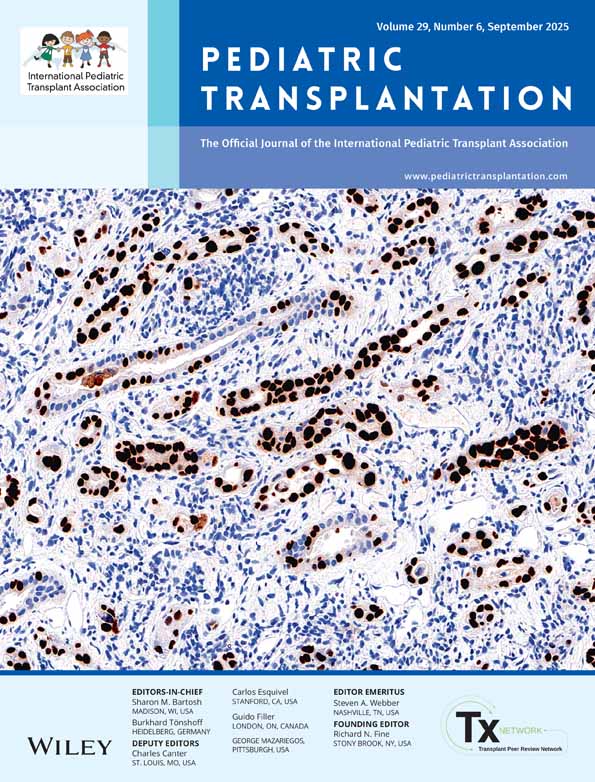Risk factors for bone mineral density loss in pediatric renal transplant patients
Abstract
Abstract: Bone mineral density (BMD) is decreased in both adult and pediatric renal transplant recipients. To investigate the risk factors associated with this decrease in BMD post-renal transplant, we studied 33 children, aged 7–22 yr, who had received a renal transplant from 0.3 to 10 yr prior to this study. BMD analysis of the total body, spine, and femur was carried out by using dual-energy X-ray absorptiometry (DEXA). Age, weight, Tanner stage, time on dialysis prior to transplantation, cumulative corticosteroid dosage, and cyclosporin A (CsA) dosage since transplantation, and use of corticosteroid therapy prior to transplantation, were recorded. Spine, femur, and total body BMD Z-scores were greater than two standard deviations (2 SD) below the mean in 45%, 42%, and 17% of patients, respectively. Age correlated inversely with total body and spine BMD Z-scores (p = 0.001 and p = 0.008); no child under 14 yr of age had a total body or spine BMD Z-score greater than 2 SD below the mean for age. Patients at a Tanner stage of 4 or 5 had lower total body and spine BMD Z-scores than did patients at Tanner stages 1–3 (p = 0.043). Time post-transplant correlated inversely with both spine and total body BMD Z-score (p = 0.013 and p = 0.023). Only total body BMD Z-score correlated inversely with cumulative corticosteroid dose (in g, p = 0.045). BMD did not correlate with cumulative CsA dose. Black patients tended to have decreased total body BMD compared with Caucasian patients. In pediatric renal transplant patients, decreases in BMD start in adolescence. Risk factors for BMD loss in these patients include increasing age, time post-transplant, increasing Tanner stage, and ethnicity. Longitudinal studies in these patients and strategies to improve BMD are needed.




